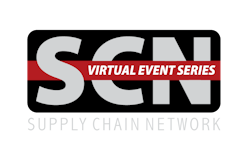
It’s time to keep a laser focus on recovery. We’ve all been put to the test by the Coronavirus disease (COVID-19), particularly in supply chains. Kudos to those supply chain professionals who successfully navigated the unforeseen changes in demand and had the flexibility to rebound.
But, for those of you operating with manual processes and limited visibility into your supply chain, you’re not alone.
It’s not easy to respond to market changes when you’re blinded by the weak points – especially those producing PPE supplies and medical equipment. This crisis is a big wake-up call for all of us. It’s time to have full visibility into every aspect of our operations.
Take a hard look at where the real breakdowns occur
Collaborate across all your teams and conduct a deep dive into your business. Remember, every department involved in your supply chain plays an essential part moving forward. Supply chain professionals should take a hard look at what actually broke down during the crisis.
Ask yourself:
1) Was it that raw materials were not available for your vendors and factories?
2) Did your vendors and factories need to shut down?
3) How was transportation and distribution affected?
4) What about the visibility for your team and supply chain partners, working mostly from home?
5) Did the demand and supply chain planning need your team to make quick changes?
6) How was the overall communication within your teams and with your supply chain partners?
Take a holistic look at your supply chain.
Make sure you fully understand each tier of production and the partners you engage with and where they source their raw materials.
For example, certain industries have been suffering under the reinstated U.S. tariffs and began to diversify their vendor portfolios long before COVID-19 hit. They may have moved some, or all production out of China. However, they may have only looked at their Tier 1 partners only to realize that essential raw materials are still being exported from China to their new production partners in other countries. This may help you escape tariffs, but prevented you from having products delivered during the crisis.
Use this knowledge to gather as much real data about your products, materials, and direct and indirect partners as you can.
It’s also a good time to look for additional production partners and raw material suppliers. Many of them are faced with order cancellations under current contracts and welcome new opportunities.
Make your supply chain truly resilient
Supply chain management tends to be 100% cost-driven, focusing on limited partners to gain more efficiency, cut costs and negotiate lower product prices. This philosophy, while cost-conscious, puts all your eggs into one basket. COVID-19 has helped senior management to shift priorities and encourage their operations teams to incorporate risk management, and demand more resilient supply chains.
First calculate the landed costs for products from present supply chain overseas. Compare this with the landed costs for the same products (domestic or near-shored produced). If these costs are higher, consider moving a percentage of them to increase your supply chain resilience.
In some cases, diversification, risk management and supply chain resilience may actually increase the number of vendors you will manage. It has a price and therefore goes against the natural instinct to design your supply chain as lean as possible. However, it pays off in the long run -- especially in times of crisis.
Go digital and leverage technology to unlock the hidden efficiency potential in your organization.
Another important area for supply chain professionals to monitor is the financial risk of their counterparties.
In a recent edition of the Harvard Business Review, Dr. Thomas Choi, Professor of Supply Chain Management at the W. P. Carey School of Business at Arizona State University, stresses the importance for supply chain management executives to invest in mapping their supply networks, and that those with supply chain visibility are the front runners.
According to Bain and Company, in an April brief, they claim it’s time to refocus on resilience. In just one example, they say that advanced analytics can improve supply forecast accuracy by 20% to 60%.
Too often data is scattered throughout the organization – in paper, some electronically, and mostly, in the heads (anecdotal information) of select employees. This is a recipe for disaster – even without COVID19.
Brian Aoaeh, Co-founder of The Worldwide Supply Chain Federation, reports three things businesses across industries are doing to navigate the crisis:
1. First, companies are taking greater interest in software for supply chain automation and collaboration as they try to stay operational in the face of shelter-in-place and social-distancing regulations.
2. Second, many companies are pursuing discussions with alternative suppliers more seriously. This is especially true where these new suppliers are based in markets that are relatively unaffected by import and export restrictions or other breakdowns in the flow of goods and services.
3. Third, especially in retail, companies are embracing the idea of omnichannel and multichannel sales. The companies that have done okay during the pandemic are those that have been able to quickly move their sales to channels their customers can use during the pandemic.
What doesn’t kill you makes you stronger
When a crisis like this happens, everyone suffers – suppliers, buyers, employees, customers, investors and society. But, there are numerous lessons to be learned here. Mostly, keep an open mind by fixing the weak links of your supply chain and diversify smartly by calculating landed costs.
And, if you haven’t done it already, on board and leverage technology to gain full visibility into every aspect of your operation. You’ll come out a winner, I guarantee it!













